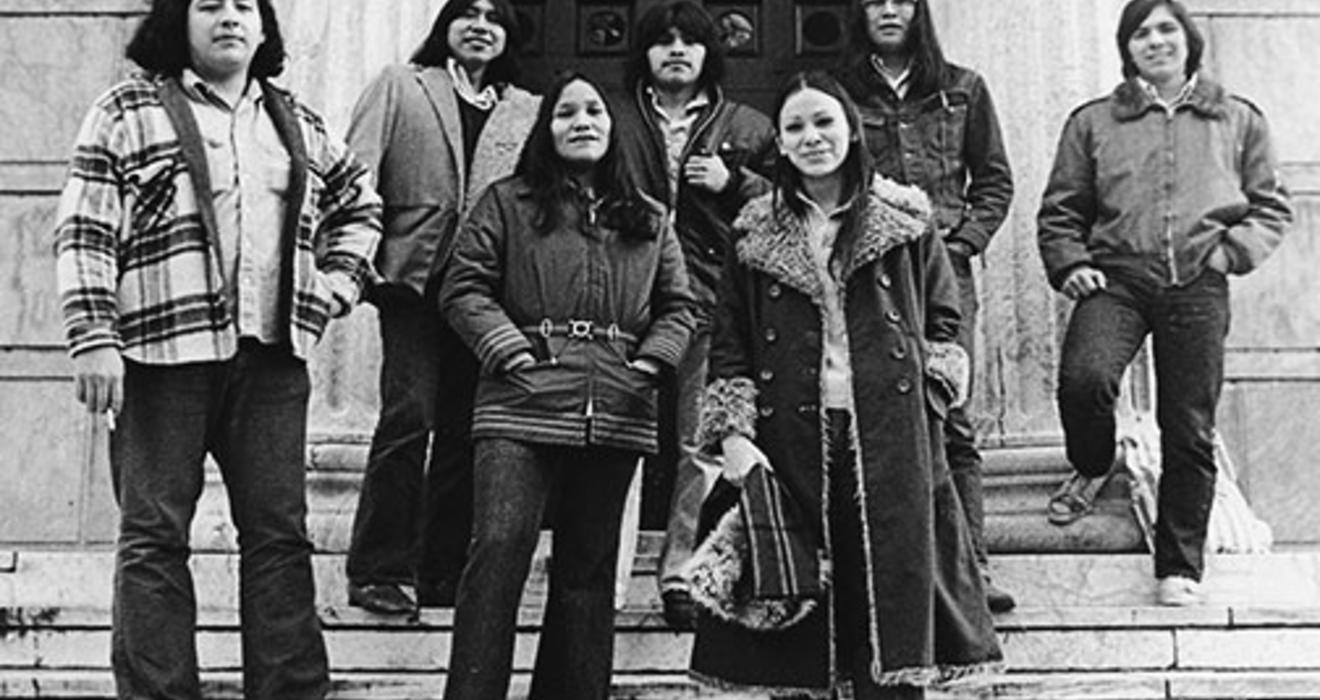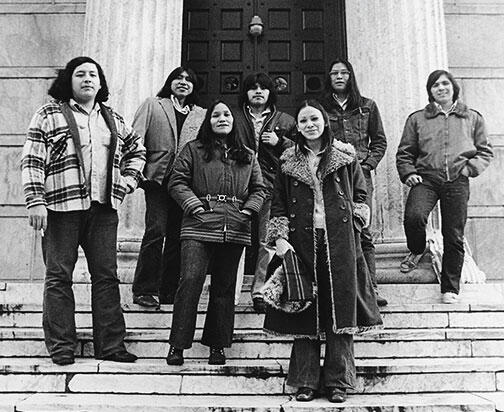
For more than two centuries after its founding, the University excluded most minorities. A handful of Native Americans proved an exception: Princeton was run by Presbyterians, some of whom had taken an interest in missionary work among the tribes.
President John Witherspoon accepted a few Lenape Indians in the 18th century, including Jacob Woolley 1762 and Bartholomew Calvin (Wilted Grass) 1776, but all dropped out. Witherspoon canceled the experiment.
The Cherokee young men of the Ross family were virtually the only Indians to attend in the 19th century, according to Alfred L. Bush, retired curator of Western Americana at Firestone Library. Howard Gansworth 1901 (Tuscarora) and Paul Baldeagle ’23 (Sioux) attended in the early 20th century. But in the late 1960s, as Native Americans enjoyed a cultural resurgence, the admission office recruited Indians at Southwest reservations and elsewhere, and a dozen were enrolled by 1972. Efforts were helped by the fact that a famous Native American anthropologist, Alfonso Ortiz, a Pueblo, was on the faculty. Bush regards this as a bygone golden age of reservation Indians on campus, with their distinctive languages and religions. “They were an extraordinary group,” he recalls, politically vocal on campus and later pre-eminent in their careers, often in the service of Indian country.
Since 2010, when the U.S. Department of Education changed the way students are asked to report race and ethnicity, it has been more difficult to track the number of Native American students on campus. Only four enrolled students identify themselves as American Indian, compared with 25 to 34 in the three years before 2010. “We regretted this change,” says Dean of Admission Janet Rapelye, “since we lost the ability to identify students with Native American backgrounds.”
In the long if rather fitful history of American Indians at Princeton, a milestone came in 1997, when Regis Pecos ’77, a Cochiti Pueblo, became a University trustee — believed to be the first Native American trustee in the Ivy League. In 2005, he co-founded a program that brings American Indian high school students and recent graduates to the Woodrow Wilson School, where for a week during the summer they explore issues facing Native American communities. It continues today.






1 Response
Lee Knott
9 Years AgoPrinceton alums, what are you doing to make...
Princeton alums, what are you doing to make Princeton more Native friendly? You are losing qualified applicants to Cornell, Dartmouth, Harvard. My sister went to Cornell. Princeton turned me down (it was my first choice) but Columbia took me.
If you Google “Native Americans” and “Princeton” you get this article, plus a link to the Native American Club at Princeton. The last activity appears to be from 2005-6.
Less than 1% of Native youth even go to college. Fewer graduate. Native graduates have decreased, unlike other minority groups.
What are you doing in terms of outreach to make yourself attractive to the Native population? Maybe you don’t want to bother, and that’s fine; we’ll just go to Cornell and Stanford and Harvard.
I looked at many schools and I thought Princeton was wonderful. It has unique strengths and culture within the Ivies/elites.
It’s sad to see you cutting an entire minority group out of consideration.